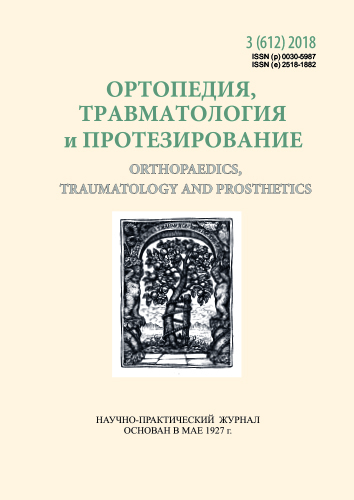A comparison of patient reported outcomes between total knee arthroplasty patients receiving the journey II bi-cruciate stabilizing knee system and total hip arthroplasty patients
DOI:
https://doi.org/10.15674/0030-5987201835-10Keywords:
patient satisfaction, total knee arthroplasty, total hip replacement, journey II, functionAbstract
Patients who have undergone total hip arthroplasties (THA) tend to report greater satisfaction than those who underwent total knee arthroplasties (TKA). Progress in TKA and THA procedures requires maximizing perceived patient satisfaction, joint-specific and overall function, as well as the return to previously enjoyed physical activities.
Dissatisfaction persists in 11–20 % of primary TKA patients while THA dissatisfaction remains low. This study examined if the use of the journey II bi-cruciate stabilizing (JIIBCS) knee implant (Smith & Nephew, Memphis, TN, USA) in TKA patients improved patient satisfaction to equal those reported by equivalent THA patients.
Methods: this retrospective analysis matched 48 JIIBCS TKA and 48 THA patients to compare satisfaction at 3 months and 1 year post-operatively. Patient UCLA, and EQ-5D scores were also compared between the JIIBCS TKA and THA.
Results: An independent samples t- test or Mann-Whitney U test, showed no difference in outcomes between 96 JIIBCS TKA and THA procedures. Demographics, gender, ASA score, comorbidity and diagnosis were found to be equivalent between groups. There was no statistical significance between JIIBCS TKA and THA patient satisfaction scores at either 3 months (p = 0.398), or one year post-operatively (p = 0.590). The JIIBCS group experienced higher UCLA scores than the THA group at both 3 months (p = 0.028) and 1 year post-operatively (p < 0.001). At 3 months post-operatively, the JIIBCS TKA patients reported superior EQ-5D scores (p < 0.001), but there was no statistically significant difference between groups in EQ-5D scores at one post-operatively, nor in the time taken to return to work, sports, or activities of daily living.
Discussion: This retrospective review demonstrated that TKA patients receiving an optimized knee implant experienced non-inferior outcomes and satisfaction compared with clinically similar THA patients.
References
- Klika, A. K., Higuera, C. A., Saleh, A., Patel, P., Suarez, J., & Barsoum, W. K. (2014). Defining value in hip and knee arthroplasty in the United States. JBJS Reviews, 2(7), 1. doi:https://doi.org/10.2106/jbjs.rvw.m.00073
- Noble, P. C. (2005). Does total knee replacement restore normal knee function? Clinical Orthopaedics and Related Research, (431), 157–165. doi:https://doi.org/10.1097/01.blo.0000150130.03519.fb
- Harris, W. H., Sledge, C. B. (1990) Total hip and total knee replacement (1). The New England Journal of Medicine, 323(11), 725–731.
- Harris, W. H., Sledge, C. B. (1990) Total hip and total knee replacement (2). The New England Journal of Medicine, 323(12), 801–807.
- Naal, F. D., Impellizzeri, F. M., Lenze, U., Wellauer, V., Von Eisenhart-Rothe, R., & Leunig, M. (2015). Clinical improvement and satisfaction after total joint replacement: a prospective 12-month evaluation on the patients’ perspective. Quality of Life Research, 24(12), 2917–2925. doi:https://doi.org/10.1007/s11136-015-1042-3
- Scott, C. E., Bugler, K. E., Clement, N. D., MacDonald, D., Howie, C. R., Biant L. C. (2012) Patient expectations of arthroplasty of the hip and knee. The Journal of Bone and Joint Surgery. Br., 94(7), 974–81. doi: https://doi.org/10.1302/0301-620X.94B7.28219.
- Bourne, R. B., Chesworth, B. M., Davis, A. M., Mahomed, N. N., & Charron, K. D. (2009). Patient satisfaction after total knee arthroplasty: who is satisfied and who is not? Clinical Orthopaedics and Related Research, 468(1), 57–63. doi:https://doi.org/10.1007/s11999-009-1119-9
- Chang, M. J., Kim, S. H., Kang, Y. G., Chang, C. B., & Kim, T. K. (2014). Activity levels and participation in physical activities by Korean patients following total knee arthroplasty. BMC Musculoskeletal Disorders, 15(1). doi:https://doi.org/10.1186/1471-2474-15-240
- Hamilton, D., Henderson, G. R., Gaston, P., MacDonald, D., Howie, C., & Simpson, A. H. (2012). Comparative outcomes of total hip and knee arthroplasty: a prospective cohort study. Postgraduate Medical Journal, 88(1045), 627–631. doi:https://doi.org/10.1136/postgradmedj-2011-130715
- Mainard, D., Guillemin, F., Cuny, C. [et al.] (2000) Quality of life assessment one year after total hip or knee arthroplasty. Revue de Chirurgie Orthopedique et Reparatrice de L'appareil Moteur, 86 (5), 464–473.
- De Beer, J., Petruccelli, D., Adili, A., Piccirillo, L., Wismer, D., & Winemaker, M. (2012). Patient perspective survey of total hip vs total knee arthroplasty surgery. The Journal of Arthroplasty, 27(6), 865–869.e5. doi:https://doi.org/10.1016/j.arth.2011.12.031
- Kahn, T. L., & Schwarzkopf, R. (2015). Does total knee arthroplasty affect physical activity levels? Data from the Osteoarthritis Initiative. The Journal of Arthroplasty, 30(9), 1521–1525. doi:https://doi.org/10.1016/j.arth.2015.03.016
- Parvizi, J., Nunley, R. M., Berend, K. R., Lombardi, A. V., Ruh, E. L., Clohisy, J. C., … Barrack, R. L. (2013). High level of residual symptoms in young patients after total knee arthroplasty. Clinical Orthopaedics and Related Research, 472(1), 133–137. doi:https://doi.org/10.1007/s11999-013-3229-7
- Halewood, C., Risebury, M., Thomas, N. P., & Amis, A. A. (2014). Kinematic behaviour and soft tissue management in guided motion total knee replacement. Knee Surgery, Sports Traumatology, Arthroscopy, 22(12), 3074–3082. doi:https://doi.org/10.1007/s00167-014-2933-5
- Argenson, J. A., Komistek, R. D., Mahfouz, M., Walker, S. A., Aubaniac, J., & Dennis, D. A. (2004). A high flexion total knee arthroplasty design replicates healthy knee motion. Clinical Orthopaedics and Related Research, 428, 174–179. doi:https://doi.org/10.1097/01.blo.0000148948.79128.76
- Digennaro, V., Zambianchi, F., Marcovigi, A., Mugnai, R., Fiacchi, F., Catani, F. (2014) Design and kinematics in total knee arthroplasty. International Orthopaedics, 38(2), 227–33. doi: https://doi.org/10.1007/s00264-013-2245-2.
- Ward, T. R., Burns, A. W., Gillespie, M. J., Scarvell, J. M., & Smith, P. N. (2011). Bicruciate-stabilised total knee replacements produce more normal sagittal plane kinematics than posterior-stabilised designs. The Journal of Bone and Joint Surgery. British volume, 93-B(7), 907–913. doi:https://doi.org/10.1302/0301-620x.93b7.26208
- Terwee, C., Bouwmeester, W., Van Elsland, S., De Vet, H., & Dekker, J. (2011). Instruments to assess physical activity in patients with osteoarthritis of the hip or knee: a systematic review of measurement properties. Osteoarthritis and Cartilage, 19(6), 620–633. doi:https://doi.org/10.1016/j.joca.2011.01.002
- Harrison, M. J., Davies, L. M., Bansback, N. J., McCoy, M. J., Verstappen, S. M., & Symmons, D. P. (2009). The comparative responsiveness of the EQ-5D and SF-6D to change in patients with inflammatory arthritis. Quality of Life Research, 18(9), 1195–1205. doi:https://doi.org/10.1007/s11136-009-9539-2
- Herdman, M., Gudex, C., Lloyd, A., Janssen, M., Kind, P., Parkin, D., … Badia, X. (2011). Development and preliminary testing of the new five-level version of EQ-5D (EQ-5D-5L). Quality of Life Research, 20(10), 1727–1736. doi:https://doi.org/10.1007/s11136-011-9903-x
- Preston, C. C., & Colman, A. M. (2000). Optimal number of response categories in rating scales: reliability, validity, discriminating power, and respondent preferences. Acta Psychologica, 104(1), 1–15. doi:https://doi.org/10.1016/s0001-6918(99)00050-5
- Thomas, T., Robinson, C., Champion, D., McKell, M., & Pell, M. (1998). Prediction and assessment of the severity of post-operative pain and of satisfaction with management. Pain, 75(2), 177–185. doi:https://doi.org/10.1016/s0304-3959(97)00218-2
Downloads
How to Cite
Issue
Section
License
Copyright (c) 2018 Mark Snyder, Alexandra Sympson, Justin Gregg, Alexander Levit

This work is licensed under a Creative Commons Attribution 4.0 International License.
The authors retain the right of authorship of their manuscript and pass the journal the right of the first publication of this article, which automatically become available from the date of publication under the terms of Creative Commons Attribution License, which allows others to freely distribute the published manuscript with mandatory linking to authors of the original research and the first publication of this one in this journal.
Authors have the right to enter into a separate supplemental agreement on the additional non-exclusive distribution of manuscript in the form in which it was published by the journal (i.e. to put work in electronic storage of an institution or publish as a part of the book) while maintaining the reference to the first publication of the manuscript in this journal.
The editorial policy of the journal allows authors and encourages manuscript accommodation online (i.e. in storage of an institution or on the personal websites) as before submission of the manuscript to the editorial office, and during its editorial processing because it contributes to productive scientific discussion and positively affects the efficiency and dynamics of the published manuscript citation (see The Effect of Open Access).














